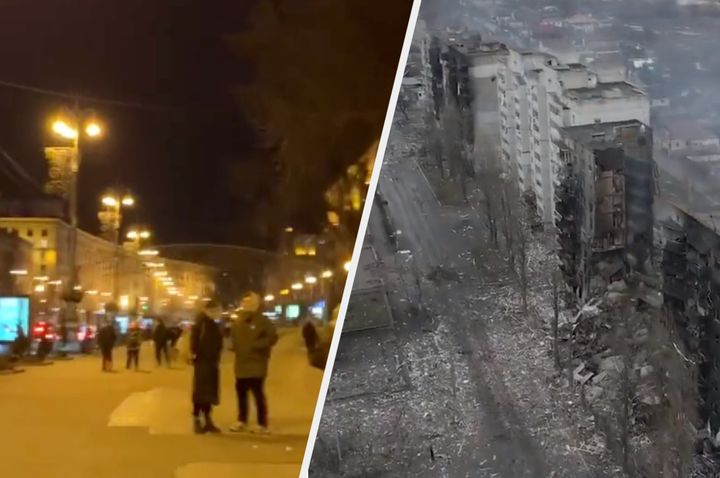
Triggering the largest mass exodus of civilians seen in the 21st Century, Russia’s intense shelling and the use of heavy artillery has forced more than one million Ukrainians to flee.
The rapid collapse of its cities has horrified the international community too.
AP reporter Francesca Ebel shared week-old footage on Twitter last night of Khreschatyk, central Kyiv, prior to Russia’s unprovoked attack.
It shows the typical hustle and bustle of a modern city, well-lit streets filled with people and traffic. The people in the 12-second clip seem relaxed, standing out in the open in small clusters surrounded by well-kept buildings.
Ebel says she sent it to people who were asking what life was like in Ukraine amid rumours of an invasion from Russian president Vladimir Putin.
Ebel then shared a snippet of life from the same area of Kyiv now, after Russian troops invaded the country.
Although its day-time in this second clip, there are no pedestrians to be seen and there are hardly any cars on the road.
While the building are still intact – unlike some other Ukrainians cities currently under siege, like Kharkiv – the 17-second footage is undoubtedly unsettling.
As Ebel describes it, life in Kyiv now is “completely empty, bleak and frightening”.
Other footage shared on social media shows blackened, collapsing buildings in the capital which have been subject to heavy bombs.
In a clip of the Borodyanka district of Kiev, shared by Luke Coffey, the director of the think tank Foreign Policy Centre, no people can be seen, only smoke.
Coffey dubbed the snippet, “Russia’s liberation”, taking aim at Putin’s claim that his attack on Ukraine was justified because he was freeing the country from “neo-Nazis”.
More than 2,000 Ukrainian civilians have been killed since Putin launched his attack on February 24.
The local resistance has managed to hold off Russian forces in several areas but one city – Kherson – has fallen.
Most of the remaining Ukrainians have to hide in underground shelters to protect themselves from the Russian bombs, prompting concern that a humanitarian crisis is just around the corner.
